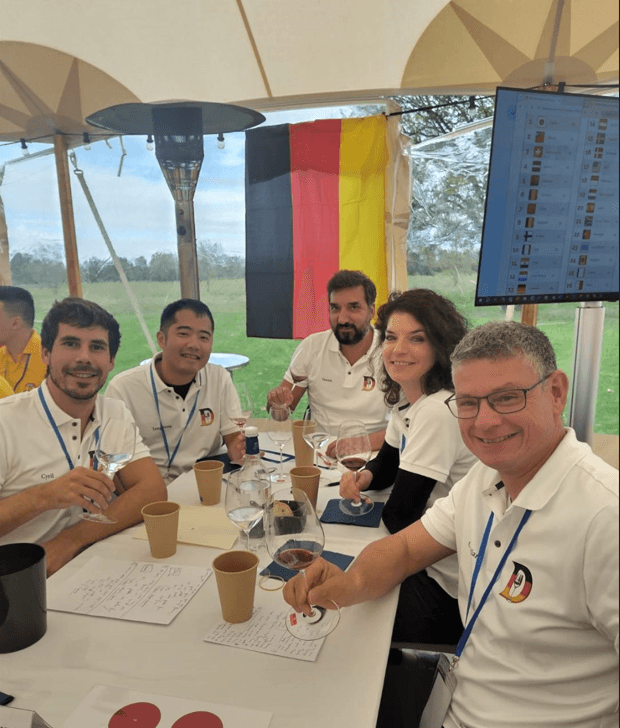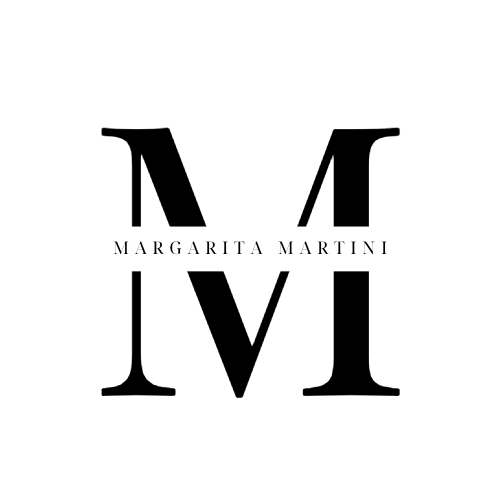
Every year, the world’s top wine tasters gather for an event that pushes the boundaries of their expertise and sensory abilities. Organized by the prestigious French magazine La Revue du vin de France, the Global Blind Wine Tasting Championship has become the ultimate test of skill for teams from around the globe. This year’s it took place on the 12th of October at the stunning Château Dauzac in Margaux, Bordeaux—a venue rich in history and surrounded by some of the finest vineyards in the world.
As part of the German team, I had the honor and excitement of participating for the second time in this highly competitive and thrilling event. Our team proudly finished in 10th place, scoring 120 points. It was a remarkable achievement, especially considering the intensity of the competition, with 39 countries vying for the top spot.
The Challenge: 12 Wines, Infinite Possibilities
The competition itself is as straightforward as it is daunting: each team must assess 12 wines—1 sparkling wine, 5 whites, 5 reds and 1 sweet wine—from a diverse range of countries and regions. The objective is to determine the grape variety, country of origin, the appellation, and the vintage. With every sip, we faced an incredible array of aromas, textures, and flavors, each one a clue that could either lead us closer to the right answer or completely throw us off course.
This year, we correctly identified five of the twelve wines: the Grand Cru Riesling from Alsace, the Riesling Spätlese from the Moselle, the Gamay from the Beaujolais, the Nebbiolo from Piedmont and the Vin Jaune from the Jura, which filled us with pride and excitement each time we nailed one. But the challenge is immense, and as always, the pressure mounts with every pour.
The Rollercoaster of Emotions
One of the most exhilarating moments during the competition came every time we recognized a wine correctly. The adrenaline rush, the joy, and the sense of accomplishment were palpable. With each correct guess, we felt like we were getting closer to mastering the vast world of wine, even if for a fleeting moment. Those moments brought a burst of energy, high-fives all around, and a renewed sense of confidence.
But, of course, the flipside was equally powerful. When we missed a wine—whether it was the grape variety, region, or vintage—it felt like a wave of disappointment. The team would exchange glances of frustration and self-doubt, wondering if we had misinterpreted key signs or simply let the pressure get to us. However, we quickly learned that in such a high-stakes environment, it’s crucial to shake off mistakes and maintain focus for the next wine.
Stress and Focus: The Mental and Teamwork Game
The competition is not just about your ability to recognize wines, but also about staying calm and collected under pressure. With only a limited amount of time to assess each wine, 10 minutes per wine, the clock constantly ticking, stress was inevitable. The atmosphere in the grand hall of Château Dauzac was charged, with each team huddled around their table, deep in concentration. Every swirl of the glass, every sniff, and every sip had to count.
Staying focused was critical, but in moments of doubt or exhaustion, it was the teamwork that carried us through. Each of us brought different strengths—some of us were more familiar with certain regions, others had expertise in specific grape varieties or vintages. Trusting each other’s knowledge and instincts was key. When the pressure mounted, it was important to rely on one another and respect each other’s insights, even when our opinions differed. At the end of the day, blind tasting is not just an individual pursuit—it’s a team effort, where collective decision-making determines success. We trusted each other’s expertise and leaned into our strengths, ultimately creating a result we could all be proud of.
A Global Celebration of Wine Knowledge
Though the competition was fierce, the event itself was a celebration of global wine culture. With teams from 39 countries, it was a reminder of how wine connects people across borders. The diversity of wines chosen for the competition highlighted the richness and complexity of the world’s viticulture, from bold reds to crisp whites, from old-world classics to emerging new-world stars.
For us, finishing in 10th place among such a talented field was an incredible achievement. The Italian team claimed victory this year, but every team walked away with a sense of pride and accomplishment. After all, participating in such an elite competition is an honor in itself.
Looking Ahead
As the day came to a close, we reflected on the experience—on the highs and lows, the moments of triumph, and the lessons learned. We left Château Dauzac with a deeper understanding of wine, a stronger bond as a team, and a hunger to return next year and improve our ranking.
Blind tasting is not just about knowing wines; it’s about trusting your instincts, staying composed under pressure, and working as a cohesive unit. We may not have tasted victory this year, but the Global Blind Wine Tasting Championship has left us with an unforgettable experience and a drive to continue perfecting our craft.
Until next year—cheers to the wines, the journey, and the passion that unites us all! 🍷✨
Team Germany:
Christian Weisenstein, DipWSET Certified Educator, Port Educator, Sherry Educator
TengNeng Huang, DipWSET, Wine Journalist
Margarita Martini, DipWSET, Wine Journalist
Cyril Meidinger, DipWSET, Wine Importer
Coach: Yannis Athanasakopoulos, WSET Level3, Wine Importer
Team support and backup: Tobi Schüle, WSET Level 3, DipWSET student
Wines tasted:
Wine N°1
- Main grape variety: Xarel-lo (65%), Macabeu (35%)
- Country: Spain
- Appellation: Corpinnat
- Producer: Can Descregut
- Vintage: 2018
Wine N°2
- Main grape variety: Riesling
- Country: France
- Region: Alsace
- Appellation: Alsace Grand Cru Altenberg de Bergheim
- Producer: Gustave Lorentz
- Vintage: 2019
Wine N°3
- Main grape variety: Sauvignon blanc (90%), Sémillon (10%)
- Country: New Zealand
- Appellation: Marlborough
- Producer: Seresin Estate
- Vintage: 2022
Wine N°4
- Main grape variety: Garganega
- Country: Italy
- Appellation: Soave
- Producer: Gini – La Frosca
- Vintage: 2020
Wine N°5
- Main grape variety: Riesling (late harvest)
- Country: Germany
- Appellation: Moselle
- Producer: Markus Molitor
- Vintage: 2018
Wine N°6
- Main grape variety: Gamay
- Country: France
- Appellation: Brouilly
- Producer: Château de la Chaize
- Vintage: 2022
Wine N°7
- Main grape variety: Malbec
- Country: Argentina
- Appellation: Mendoza
- Producer: Bodega Rolland
- Vintage: 2019
Wine N°8
- Main grape variety: Tempranillo (97%), Merlot (3%)
- Country: Spain
- Denomination: Ribera del Duero
- Producer: Vega Sicilia Valbuena
- Vintage: 2019
Wine N°9
- Main grape variety: Cabernet-Sauvignon (65%), Syrah (35%)
- Country: Lebanon
- Appellation: Bekaa Valley
- Producer: Château Kefraya
- Vintage: 2019
Wine N°10
- Main grape variety: Nebbiolo
- Country: Italy
- Appellation: Barolo
- Producer: Giacomo Borgogno
- Vintage: 2020
Wine N°11
- Main grape variety: Mourvèdre (95%), Grenache (5%)
- Country: France
- Appellation: Bandol
- Producer: Domaine de La Bégude
- Vintage: 2006
Wine N°12
- Main grape variety: Savagnin
- Country: France
- Appellation: Côtes du Jura
- Producer: Domaine Sainte-Marie
- Vintage: 2011
